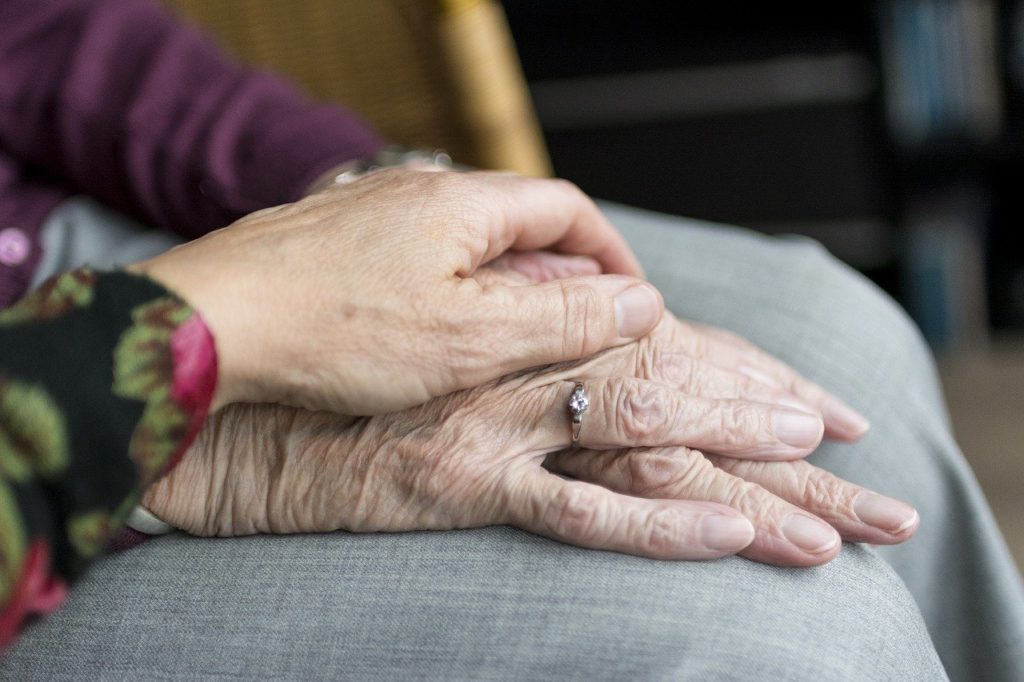Livewell Lifeline Tip: One of the most common safety problems in persons with Alzheimer’s is that of falling. Alzheimer’s is a disease associated with a loss of memory and intellectual abilities. The risk of developing Alzheimer’s increases with advancing age and gradually gets worse over time.
It’s estimated that up to 60% of persons with Alzheimer’s experience one or more falls annually. Of even greater importance, the risk of sustaining an injury from a fall is considerable. Fall-related fractures such as arm and hip fractures are all too common and can often leading to long term care placement. If caregivers are aware of why Alzheimer’s individuals fall, they can take steps to prevent falls and potential injuries.
Risk of FallingIt’s important to understand that falls are not a normal part of Alzheimer’s. In order to stop falls from happening, it will help you to understand who is at greatest risk and why. There are certain conditions or situations putting Alzheimer’s individuals at high risk. Persons with Alzheimer’s may not exhibit all the risk factors discussed. As the disease gets progressively worse, however, the likelihood of exhibiting a number of fall risk factors increases.
Altered Mobility Mobility includes the ability to walk safely and maintain good balance. Persons with Alzheimer’s tend to exhibit marked impairments with both, which places them at increased fall risk.
Cautions walking. This is characterized by individuals shuffling or not lifting their feet off the ground when walking. Walking is accomplished slowly with a slightly bent or flexed posture and uncertain foot placement on the ground. Both situations can easily result in trips and slips.
Disturbed balance. Individuals exhibit a lack of ability to maintain stability during postural changes. For example, getting up from seated positions, reaching up for hard to obtain objects on one’s tip toes or walking up steps can result in poor balance.
The addition of disorders such as stroke, arthritis, diabetes, and neurological disease can seriously affect the walking and balance capability of persons with Alzheimer’s.
Altered CognitionCognitive loss is the hallmark of Alzheimer’s and adversely affects the person’s memory, thinking, and behavior. This can place individuals at great risk for falls. Altered cognitive function can result in:
- Lack of understanding and awareness of the potential for falls and the need for assistance.
- Judgmental errors, such as an inability to recognize a difference between safe and hazardous mobility, and a misperception of environmental dangers.
- Overestimation of one’s capacity for safe mobility (“I can do it myself”), and, as a result, individuals attempt to accomplish tasks that they are no longer capable of safely performing by themselves.
- Failing to remember limitations in daily living, such as forgetting that they can’t walk by themselves.
- Insistence on performing activities, such as attempting to get up from a chair and going to the toilet even though they are wearing incontinence garments, either because of forgetfulness or a failure to understand the intervention.
- Inability to ask for assistance with mobility because of communication problems.
- Refusing or forgetting to seek help with mobility or to use assistive devices, such as canes, walkers and bathroom grab bars.
- Incapable of understanding the need for assistive devices or using them correctly.
Any significant loss of cognitive function can lead to:
- Behavioral manifestations. Wandering, pacing, agitation, restlessness, disorientation, hallucinations all which can result in increased fall risk.
- “Sundowning”, a specific type of behavioral problem, results in disruptive behaviors that appear during late afternoon or early evening. Its thought that increased tiredness and/or lack of afternoon sunlight or lighting contributes to this situation.
Use of Medications
Taking too much medication or the wrong combination of drugs can sometimes affect judgment, coordination and balance. In particular, the use of psychoactive drugs to control mood and behavior can result in adverse effects (i.e., drowsiness, dizziness, unstable blood pressure and worsening confusion) that increase fall risk.
Altered VisionVision plays a critical role in avoiding falls. Good eyesight is necessary for an individual to distinguish their surrounding environment clearly and to detect any hazardous conditions correctly. Alzheimer’s is associated with several visual problems that can heighten fall risk, especially when combined with hazardous environmental conditions.
Restrictions in peripheral or side vision. This can keep individuals from seeing hazards and objects in their path, and lead to trips or slips.
Decline in depth perception. The ability to judge distances and relationship among objects in one’s field of view can result is the person’s perception being no longer accurate. They may miss-judge where the edge of a chair is when sitting or not clearly judge the location of a step edge.
Loss of contrast ability. The ability to perceive spatial detail and contrast between objects can cause Individuals great difficulty walking from one surface to another, such as from carpeting to tile. They may perceive the new surface as a hole. Stepping off a curb can be especially challenging as they can no longer discern how far down that step is.
EnvironmentAt least half of all falls in persons with Alzheimer’s occur at home. They generally take place during ordinary activities like walking, climbing stairs, sitting/rising from furnishings, getting in/out of shower/tub, etc. Common environmental obstacles associated with fall risk in AD include:
- Low lighting, lack of nightlights and increased lighting glare.
- Room clutter and slippery floor surfaces/rugs.
- Low seating height of beds and chairs.
- Low toilet seats and lack of grab rail support.
Alzheimer’s places individuals at far greater risk of falling and caregivers should consider using a medical alert system with fall detection capabilities. A Livewell Lifeline tip is to consider the use of the Livewell Libris AutoAlert system. This system can detect a fall occurrence and signal the emergency response center even if the user is incapacitated and not able to push the alert button.
Livewell mobile medical alert devices monitored by AvantGuard provide comfort, security and fast response outside the home for countless active adults across the United States.
Terry, of Wichita Falls, learned the value of his mobile medical alert system just a day after receiving and testing it for the first time.
Terry was walking down the side of the road near the golf course when, in his own words, “…a grey van drove by, ran me over, and then just kept driving!” Terry pressed the button on his mobile medical alert device and AG Team Member, Kait, received Terry’s medical alarm within moments. She quickly confirmed Terry’s location, assessed injuries sustained by the hit and run, and dispatched help.
Kait calmly assured Terry that help was on the way and stayed with him on the line, providing companionship through the agonizing wait for emergency assistance. Kait listened intently to ensure that Terry’s needs would be met and stood by ready to update emergencies services of any changes in Terry’s condition. The fire department and ambulance soon arrived on scene and whisked Terry to the hospital. Other AG Team Members have spoken with Terry since the incident and are pleased to hear that his condition is improving.
Our thanks go to AG Team Member, Kait, who not only followed procedures carefully, but who went above and beyond to compassionately assist a valued customer.
Livewell mobile medical alert systems provide comfort, security and fast response outside the home.

